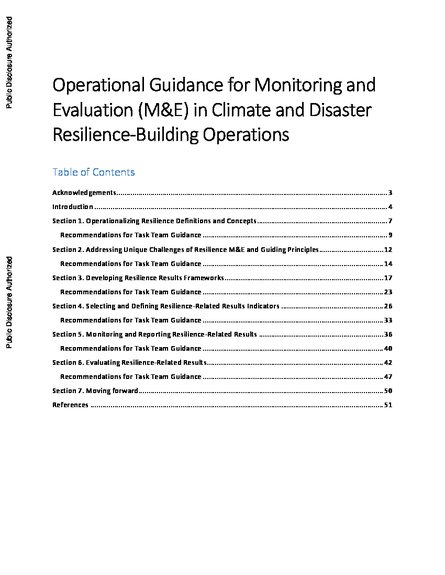
This note offers practical guidance for monitoring and evaluation (M&E) of World Bank operations that aim to increase resilience to climate-related natural disasters and long-term climatic changes (resilience M&E), through activities that include climate change adaptation and disaster risk management (resilience-building) components.
This note proposes to enhance the understanding of design options available for M&E systems in the context of resilience-building operations. This guidance note aims to bring about an improvement to M&E and enable teams to design evidence-based resilience-building projects. The application of improved M&E may provide a platform of evidence that can guide implementation and recommend corrective measures.
The note is structured around the main elements for designing a resilience M&E system. After first providing key definitions and concepts of resilience-building (Section 1), it highlights general challenges and offers guiding principles for resilience M&E (Section 2). This note then discusses resilience-related design considerations for respective components of a typical M&E system and results frameworks (Section 3) where an illustrative overarching results framework for the Sustainable Development Vice Presidency (SD VP) at the World Bank is presented with indicators (Section 4); monitoring and reporting (Section 5); and evaluation (Section 6).